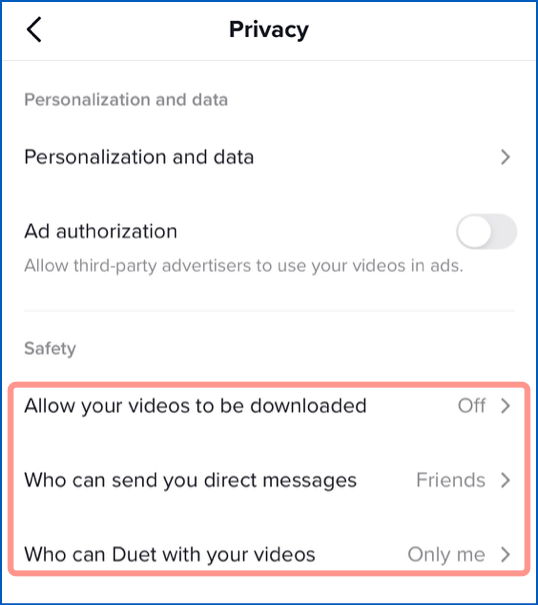TikTok is a video-sharing social media platform, owned by Chinese company ByteDance, where users make and share short-form videos that range from three seconds to one minute long.
It’s the latest app to take its turn on the social media throne, following MySpace in 2005, Facebook in 2008, and most recently Instagram and Snapchat from around 2014.
Like it or not, there is no denying the recent popularity of TikTok. Its success is in large part because it offers newer and more unique ways of interacting, which no other popular app did before.
Although the app launched in 2016, 2020 was the year that TikTok took over. This is perhaps due to the coronavirus pandemic which meant many people suddenly had a lot more time on their hands to watch silly videos, send them to friends, or even partake in making the silly videos.
Friend or Foe?
Despite its worldwide popularity, many people and governments have cybersecurity concerns about TikTok, with the Indian government even banning the social media platform in June 2020, along with 58 other Chinese phone apps.
Security concerns largely center on the fact that TikTok is a Chinese company. According to the Indian government, this makes it a threat to national security because Chinese law says that companies in that country have to share information with their government.
As the popularity of the app continued to grow among American teens, the US launched an investigation into TikTok in 2019, concerned that it potentially gave the Chinese government a bigger reach than ever before.
Several US businesses, including Wells Fargo, have asked employees to delete the Tik Tok app from company-owned devices. The US military has already banned Tik Tok from government-issued phones.
Despite these concerns, no one has shared solid proof that TikTok is ‘stealing’ information from anyone.
That said, whichever platform you use – TikTok, Facebook, Twitter or anything else – it’s always best to start from the assumption that any data you share may be made public or fall into other people’s hands at some time.
If you decide to use TikTok – and the same goes for all social media platforms – be careful with what you share, and don’t assume any inherent data security or privacy.
Six tips to stay safe on TikTok
Whether you are looking to keep yourself safe on the app, or you want to protect your children and young people, here are some tips to help you maximize your security and privacy when using TikTok.
1. Ensure that your TikTok account is private
Making your account private essentially means that you have to approve someone before they can follow you. This means you can ensure that only your friends can access to your videos and likes.
Head into Settings > Privacy and Safety and look for the Discoverability heading.
Turn the Private Account option on to activate this feature.

2. Don’t allow other people to find you
By default, TikTok will share your content by featuring it on the “For you” pages of people you don’t know. If you want to prevent strangers from seeing your videos, you can turn off the Suggest your account to others option, as shown above.
Turning this setting off will stop your account being recommended to other users, and prevent other people from finding the account via search engines.
3. Don’t allow interactions
TikTok users can interact with your account and content in multiple ways: they can view or download it, direct message you, and duet with your videos.
The default setting for these interactions is On, but you have the option to change it to Friends (i.e. only the people you have allowed to follow your account can interact with your content) or Off.
To limit how other users can interact with your videos go to the Safety section of the Privacy page.

Blocking interactions stops comments, duets, and reactions, and prevents people from seeing your messages or the videos you’ve liked.
Blocking messages is particularly important because messages are a way for TikTok users to chat privately – a feature that could easily be abused by someone with the wrong intentions.
4. Manage screen time
TikTok is highly addictive, with the average user spending as much as 52 minutes a day scrolling through short videos.
If you wish to limit time on the app, go to the Digital Wellbeing section of the Settings & Privacy page and use the Screen Time Management option to select your time limit.

If you set your limit to 30 minutes a day, you will then be cut off for the rest of the day once you’ve hit the limit.
During setup, it’s possible to choose a passcode to prevent a child changing this setting in future.
5. Use Restricted Mode for children’s accounts
This is one of the most important settings for any parent with a child using TikTok.
Restricted Mode stops inappropriate content from appearing for children. It’s not 100% accurate, but it does a pretty good job.
It’s also possible to set a passcode to prevent your child from changing this setting later on.
This setting is also found in the Screen Time Management section.
6. Take advantage of Family Safety Mode
This is an important setting that allows you to assign the account as a ‘Parent’ or ‘Teen’, to give you remote access over a youngster’s TikTok account.
Once connected to the account, you can control:
- Screen Time Management. Set how long your child can spend on TikTok each day.
- Direct Messages. Decide who can message your child, or turn off direct messages completely.
- Restricted Mode. Restrict types of content that you think are inappropriate for your child.
It’s possible to manage all this from your own device, so you can make sure your child is protected at all times.
This setting is in the Family Safe Mode section of Digital Wellbeing.

Gary
Thanks to you guys, I think I might lift the household ‘ban’ on my kid having a TikTok account. Very informative article. Thanks!
charlie
clarification – if the suggest your account feature is on, and the private account feature is on, will tiktok still share your content with others?
Paul Ducklin
I can’t answer that myself, but will ask the experts! And I don’t have the TikTok app installed myself to check the UI. (I need to have a really strong personal or business purpose before I will install apps or create online accounts that demand my precise birthdate up front when all they actually need to know for legal reasons is whether I am X years or older. Why GDPR permits this overcollection of personal data, I don’t know. Perhaps, in fact, it does not.)
However, I have seen a screenshot in which both options were turned on. My assumption is that if you do this, your account will be private, but the *existence* of your account will not. So I am guessing that your account will still be recommended to other people at TikTok’s discrection, but they won’t be able to check you out and see *why* TikTok decided to recommend you.
At any rate, turning the former option on doesn’t seem to turn the other option off.
(Hint to TikTok’s user interface designers: for clarity, consider making these options so that the setting ‘on’ has a similar effect on privacy for both options, e.g. call them “Public account” and “Suggest account” or “Private account” and “Do not suggest account”. Also, consider making it so that Private accounts are automatically Unsuggested accounts – there seems little sense in suggesting an account that can’t be viewed. And when an account is made private, grey out the suggest option entirely to make this connection immediately obvious.)
harrietstone
With a private account, all your current followers (those that you have accepted to follow you) will still see all of the content you post. A private setting limits incoming messages and visibility of your content to followers only. However, you won’t be able to get any new followers through viral channels such as the home screen or hashtag challenges. Even if you do have the “Allow Others to Find Me” option selected.
In short, your profile photo, username, and bio are still visible to all users on the platform. However, your actual content will not be visible to anyone (and will not appear on the home page for anyone else), apart from your close friends that you have accepted to follow you.